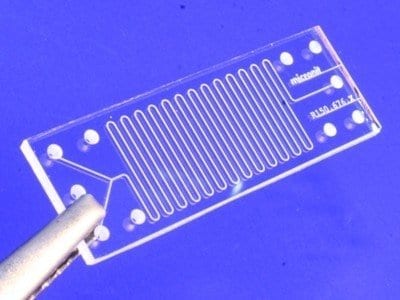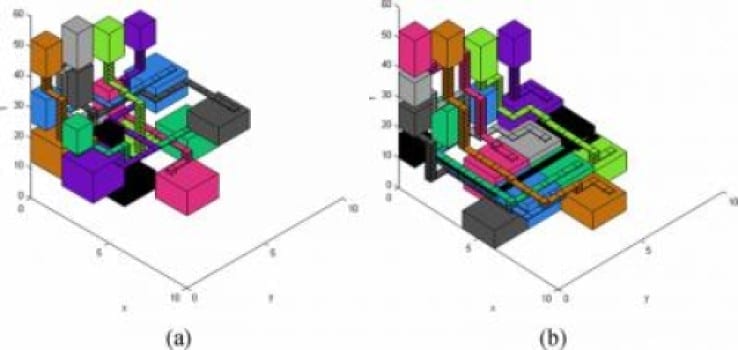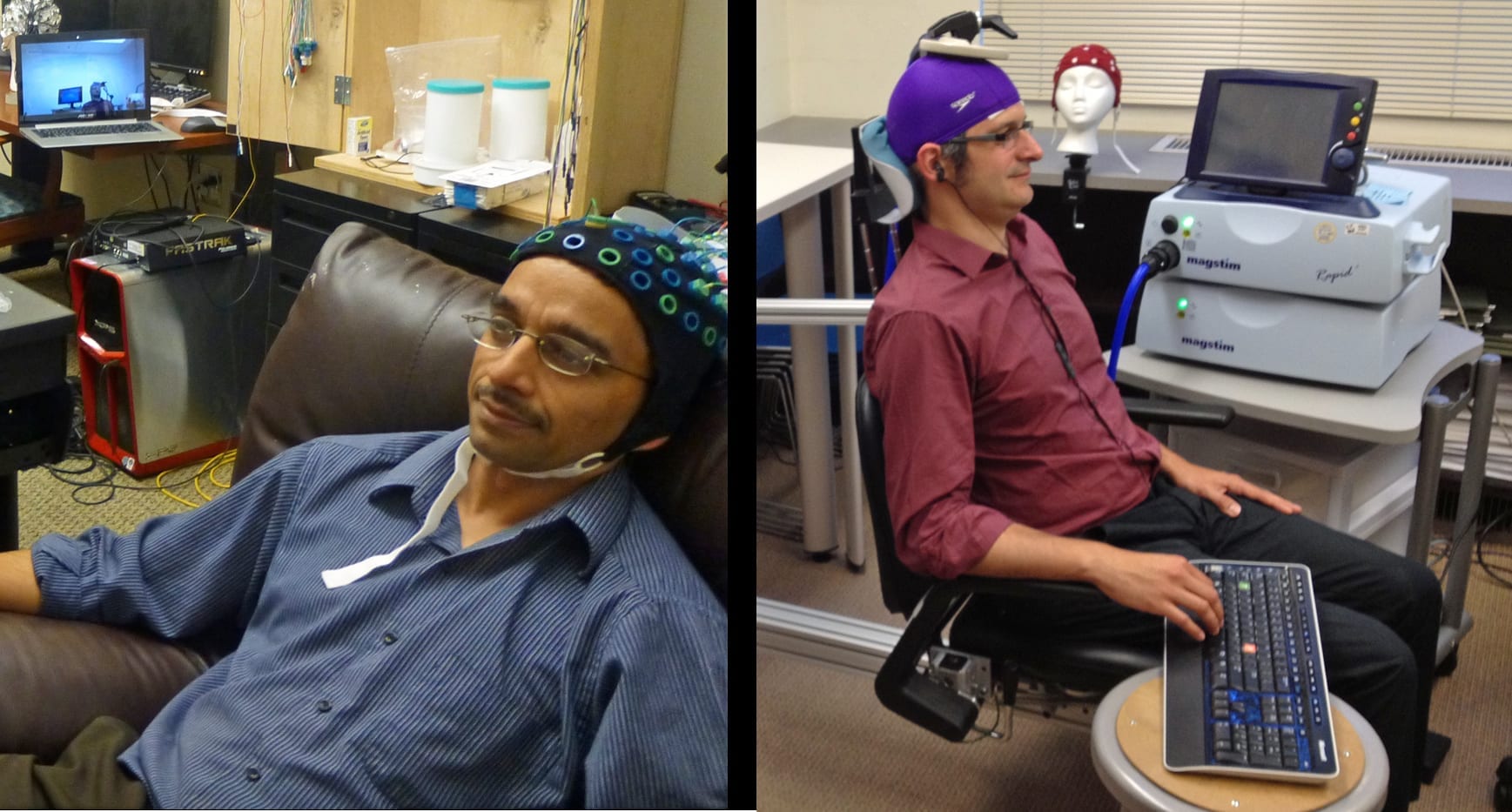
“The chip enables us to grow our own human cells and observe a drug’s effect on them in their natural environment,”
On a rectangular chip slightly smaller than a person’s finger, two scientists and an engineer are writing what they hope will be the blueprint for the future of drug testing.
The researchers are studying the behaviors of cells to learn more about how cells send signals to each other. How are cells affected by the flow of blood? And how can they be studied outside the body?
The problem that the group hopes to solve is a challenge that confronts many cancer patients: How can drugs be made to kill cancerous cells without harming healthy cells and tissue nearby?
The researchers represent three disciplines. Yaling Liu, assistant professor of mechanical engineering and mechanics, studies the interfacial phenomena that occur at the micro- and nanoscale of biological systems.
Linda Lowe-Krentz, professor of biological sciences, is a cell biologist who studies blood vessels and the changes that cells undergo in response to blood flow.
And Daniel Ou-Yang, professor of physics, has developed novel methods of using microscopy and lasers, including “optical tweezers,” to study the activities of cells at the nanoscale.
The researchers and their students are developing a method of testing cancer drugs on a chip etched with channels that mimic the branching capillaries of the human lung and are coated with human endothelial, or blood vessel, cells.
In addition to learning how to target drugs selectively at cancerous cells, they hope to reduce the cost of drug tests as well as the time it takes to run them.
The project has been supported for more than a year through Lehigh’s Biosystems Dynamics Summer Institute, which is funded by the Howard Hughes Medical Institute. The group recently received a three-year grant from the National Institutes of Health.
An alternative to invasive therapies
Current cancer treatments, says Liu, can be extremely invasive. Most chemotherapies, for example, disperse an anti-cancer drug into the bloodstream, where it destroys both cancerous and noncancerous tissue and cells.
Standard drug-testing methods also have shortcomings, says Lowe-Krentz. Some tests are done in the static environment of cells and cultures, which don’t mimic the behavior of the entire organism. Others are performed on animals: this is expensive and the results can be unreliable because a drug’s effect on an animal is different from its effect on a human.
By conducting tests on a chip, says Liu, researchers can approximate the environment a drug encounters inside the human body and track its fate in that environment. Chips are cheap—each costs less than a dollar to make, and multiple tests can be run simultaneously on a series of chips. Size is another advantage. In a test, the small chip uses only about a tenth of the amount of drug and tissue required by more conventional testing methods.
“The chip enables us to grow our own human cells and observe a drug’s effect on them in their natural environment,” says Liu. “This will make it possible to do screenings much more quickly and shorten the research cycle.”
The Latest Bing News on:
Lab-on-a-chip drug testing
- Ryan Garcia requests B-sample be tested after failed drug teston May 7, 2024 at 5:48 am
Star boxer Ryan Garcia requested Monday that his B-sample be analyzed, according to a letter obtained by ESPN, connected to adverse findings in his A-sample for the performance-enhancing drug Ostarine ...
- Drug Screening Laboratory Services Market Focus Group Alchemy Transforming Conversations into Strategic Goldon April 26, 2024 at 5:39 am
Request To Download Free Sample of This Strategic Report @ :- https://reportocean.com/industry-verticals/sample-request?report_id=bw1494 Drug Screening Laboratory ...
- The Basophil Activation Test in the Diagnosis of Immediate Drug Hypersensitivityon April 5, 2024 at 5:00 pm
ASA: Aspirin salicylic acid; DPT: Drug provocation test; H: History; IDT: Intradermal skin test. The basophil activation test (BAT) is not a primary diagnostic tool; it is a test complementary to ...
- Drug-susceptibility Testing in TB: Current Status and Future Prospectson March 30, 2024 at 5:01 pm
These data substantiate the need for rapid and reliable methods for drug-susceptibility testing (DST) of Mycobacterium tuberculosis. For years, proportion methods on egg- and agar-based media were ...
- Roadside drug testing has been highlighted by a driver's false positive and loss of licenceon March 14, 2024 at 6:26 pm
which was sent to a lab for testing, cleared him of having drugs in his system and the loss of licence was reversed. So, what are roadside drug tests? And how accurate are they? When Victoria ...
- Organ-on-Chips Revolutionize Drug Safety Testingon March 14, 2024 at 5:00 pm
Organ-on-chip (OOC ... allowing researchers to test drugs and study diverse physiological processes. This whitepaper explores the latest advancements in OOC platforms that can help to efficiently ...
- Questions over drug lab's accreditation leads to pause in Harris County's pretrial serviceson January 19, 2024 at 3:40 pm
A Harris County contract with a drug testing company has raised fears the lab lacked accreditation for criminal proceedings for about 14 months and may have led to misguided bail decisions.
- Lab on a Chip News and Researchon November 1, 2023 at 5:00 pm
As a potential alternative for drug testing without lab animals ... A recent study shows how a novel and integrated lab-on-a-chip platform can represent a rapid, affordable, and exact molecular ...
- Drug Testingon July 24, 2023 at 3:38 pm
The U.S. Department of Health and Human Services wants public comment on adding fentanyl to the Urine and Oral Fluid Analyte Table, which would affect DOT drug testing for truck drivers and other ...
- Can You Test Positive for THC in a Mouth Swab Drug Test?on January 4, 2023 at 7:10 pm
Then, the collector will safely store the sample to be sent off to a lab for analysis. After you take a mouth swab drug test, a technician will analyze it. They may find THC or other drugs ...
The Latest Google Headlines on:
Lab-on-a-chip drug testing
[google_news title=”” keyword=”lab-on-a-chip drug testing” num_posts=”10″ blurb_length=”0″ show_thumb=”left”]
The Latest Bing News on:
Drug testing
- Google DeepMind’s AlphaFold 3 could speed up drug discovery for diseaseson May 8, 2024 at 10:30 am
Dr Nicole Wheeler, an expert in microbiology at the University of Birmingham, said AlphaFold 3 could significantly speed up the drug discovery pipeline, as “physically producing and testing biological ...
- ‘Ozempic babies’: What the science says on whether the drug leads to surprise pregnancieson May 8, 2024 at 10:19 am
She took a second test, then a third — there was no question ... you will improve fertility,” she said.Cree noted that studies have shown that liraglutide, an earlier GLP-1 drug sold as Victoza for ...
- Further Drug Testing Clears ‘King Ryan’ Of Nandrolone Useon May 8, 2024 at 5:43 am
A previous report suggested one of Garcia’s samples may have nandrolone metabolites in it. Further testing has now concluded it does not.
- Ryan Garcia requests B-sample be tested after failed drug teston May 7, 2024 at 12:44 pm
Boxing star Ryan Garcia has requested that his B-sample be analyzed, according to a letter obtained by ESPN, after he failed a drug test prior to his upset win over Devin Haney.
- Conor McGregor calls for lifetime ban of Ryan Garcia after reported positive drug test following victoryon May 3, 2024 at 4:00 pm
Conor McGregor has called for a lifetime ban of Ryan Garcia, saying Garcia "cheated the weight and was juiced" for his fight on April 20.
- Conor McGregor calls for 'lifetime ban' of Ryan Garcia after reports of failed drug tests in deleted tweetson May 3, 2024 at 11:21 am
McGregor may have been set off after he was so publicly in Garcia's corner after the loss to Gervonta 'Tank' Davis ...
- Ryan Garcia fails drug test. His opponent, Devin Haney, is connected to Victor Conte.on May 2, 2024 at 4:03 pm
Boxer Ryan Garcia failed two drug tests before his win last month against Devin Haney. BALCO mastermind Victor Conte says he's a part of Haney's camp.
- New California law to require drug testing devices at bars, nightclubson May 2, 2024 at 9:35 am
Assembly Bill 1013 aims to prevent "roofying” and mandates businesses with a Type 48 license to provide drug testing devices starting July 1.
- Garcia Failed Drug Test Before Haney Win: ESPNon May 1, 2024 at 10:48 pm
American boxer Ryan Garcia failed a drug test just before his explosive victory over undefeated WBC super-lightweight Devin Haney last month, ESPN reported on Wednesday.
- Test Clear Reviews: Leading Home Drug Test and Detox Solutions in 2024on May 1, 2024 at 1:30 am
In an era where drug testing has become a commonplace requirement for many employers, sports agencies, and legal situations, individuals find themselves seeking reliable solutions to ensure their ...
The Latest Google Headlines on:
Drug testing
[google_news title=”” keyword=”drug testing” num_posts=”10″ blurb_length=”0″ show_thumb=”left”]










